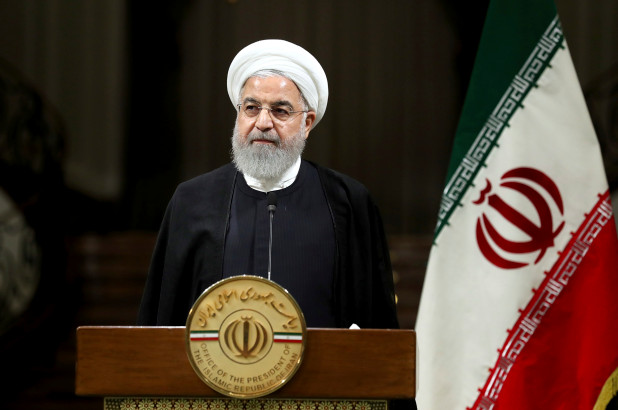Trump’s Sanctions on Iran Won’t Work Without Threat of Force
 President Trump claims the United States is “locked and loaded” after Saturday’s serious Iranian attack on one of the world’s most important oil facilities in Saudi Arabia. That has essentially been the president’s posture for four months, which has only encouraged Tehran to escalate its strikes against energy infrastructure around the Gulf. This policy of self-deterrence against Iran needs to end.
President Trump claims the United States is “locked and loaded” after Saturday’s serious Iranian attack on one of the world’s most important oil facilities in Saudi Arabia. That has essentially been the president’s posture for four months, which has only encouraged Tehran to escalate its strikes against energy infrastructure around the Gulf. This policy of self-deterrence against Iran needs to end.
Since the founding of the Islamic Republic, Iran has mostly acted with impunity against US targets — from the 1983 Marines barracks bombing in Lebanon to the Iranian-attributed killing of more than 600 US service members in Iraq.
Despite claiming to be exerting “maximum pressure” against Iran, the Trump administration has unnecessarily limited itself solely to economic tools. More effectively pressuring Tehran requires demonstrating a willingness to confront it militarily, as Israel is doing.
A widely shared view is that economic pressure brought Iran to the negotiating table in 2012. But that wasn’t sufficient to secure an acceptable deal, which is why Trump correctly withdrew from the fatally flawed 2015 nuclear agreement, the Joint Comprehensive Plan of Action (JCPOA).
Many also argue that economic sanctions are severely hurting the Tehran regime and its ability to cause mischief.
Yet economic sanctions have not induced Iran to meet any of the administration’s demands. On the contrary, Iran is expanding its nuclear program and aggression in the Persian Gulf, Lebanon, Yemen, Gaza and elsewhere, putting more pressure on the United States.
Critically, consistent with much of the past four decades of US policy, Trump eschews the most effective form of pressure against Iran: military action or the credible threat of it.
In fact, US officials repeatedly sought to make clear they have not and, by extension, will not use force. The Defense Department even distanced itself from recent Israeli strikes on Iranian proxies while Trump denied US involvement in a failed Iranian missile test.
Such restraint is meant to avoid conflict, but history suggests that forceful yet calibrated pushback — not sanctions alone — is vital for changing Iranian behavior.
Iran has backed down when the United States or others have used, or credibly threatened to use, military force — demonstrating that confronting Iran need not be an all-or-nothing choice between appeasement and “the next Iraq war,” as many suggest.
In 1988, US support for Iraq helped convince then-Supreme Leader Ruhollah Khomeini to end the Iran-Iraq War. In 2003, after the United States invaded Iraq, Iran — fearing it was next — suspended its uranium-enrichment program. In 2011, Iran quieted its claims to islands in the Strait of Hormuz after a second US carrier appeared in the region.
Targeted, measured US military responses against Iran would bolster credibility, the currency of international relations and the bedrock of deterrence.
The United States could reinforce its position by more materially and conspicuously supporting Israel’s campaign against Iranian aggression. This should include a mutual defense pact, enshrined in a congressionally endorsed treaty, which Trump just claimed he plans to discuss further with Israel after its elections.
Secretary of State Mike Pompeo recently said of Afghanistan, “Applying military pressure to the Taliban is necessary to get the negotiated outcome that we’re looking for.” The same applies to Iran. Sanctions have not, and will not, suffice to change Tehran’s behavior. Without the credible threat of the use of force, US pressure on Iran is far from “maximum.”
Michael Makovsky, a former Pentagon official in the George W. Bush administration, is president and CEO of the Jewish Institute for National Security of America (JINSA).
Originally appeared in The New York Post